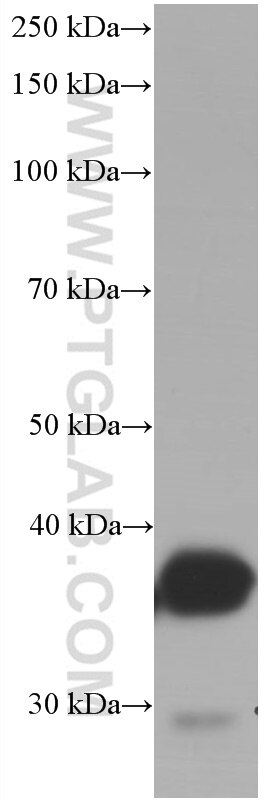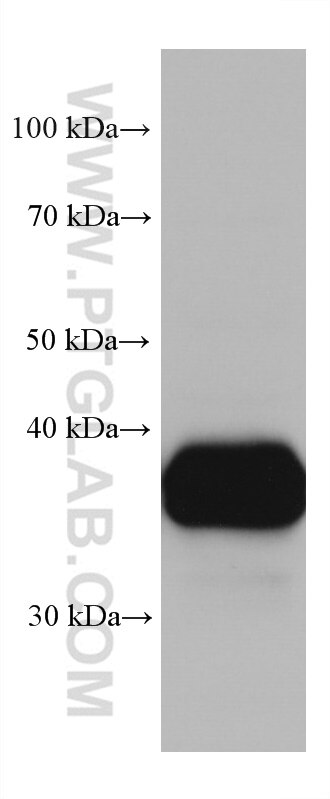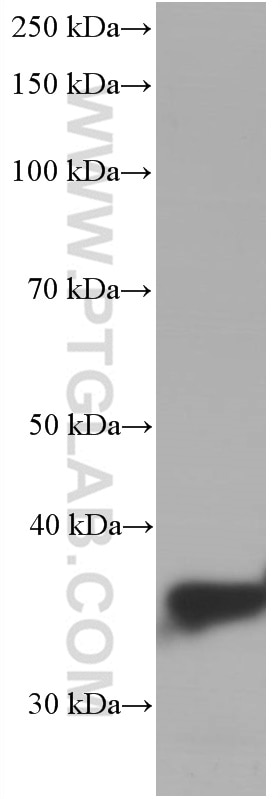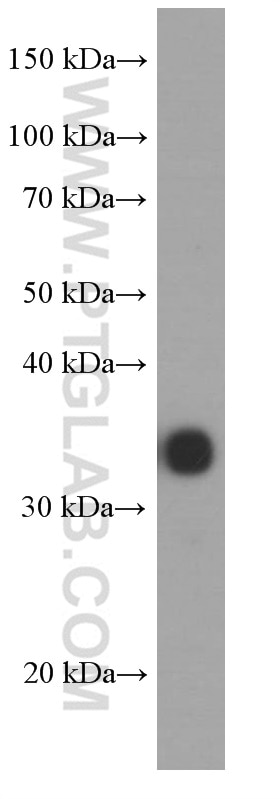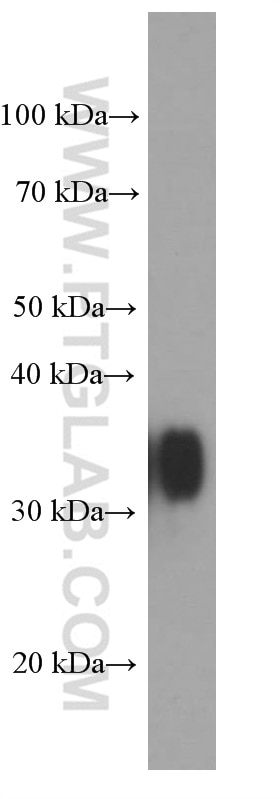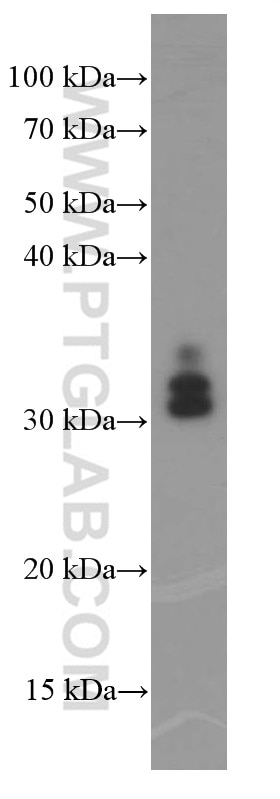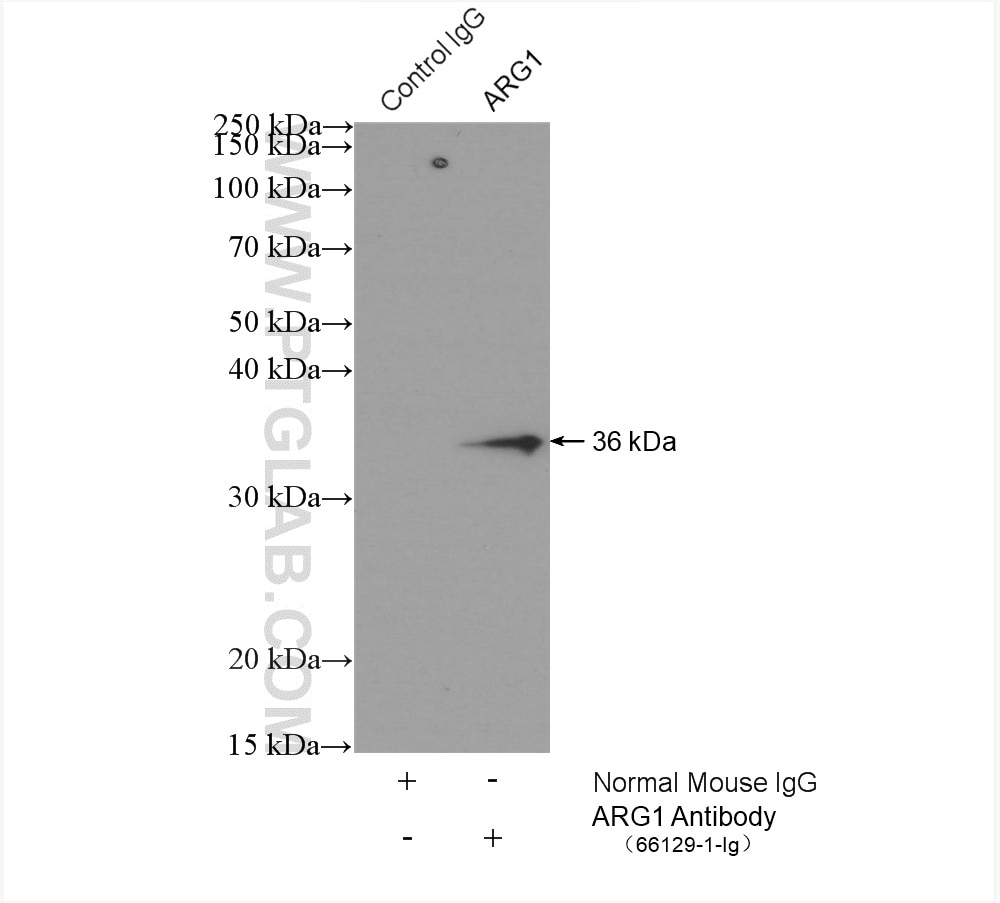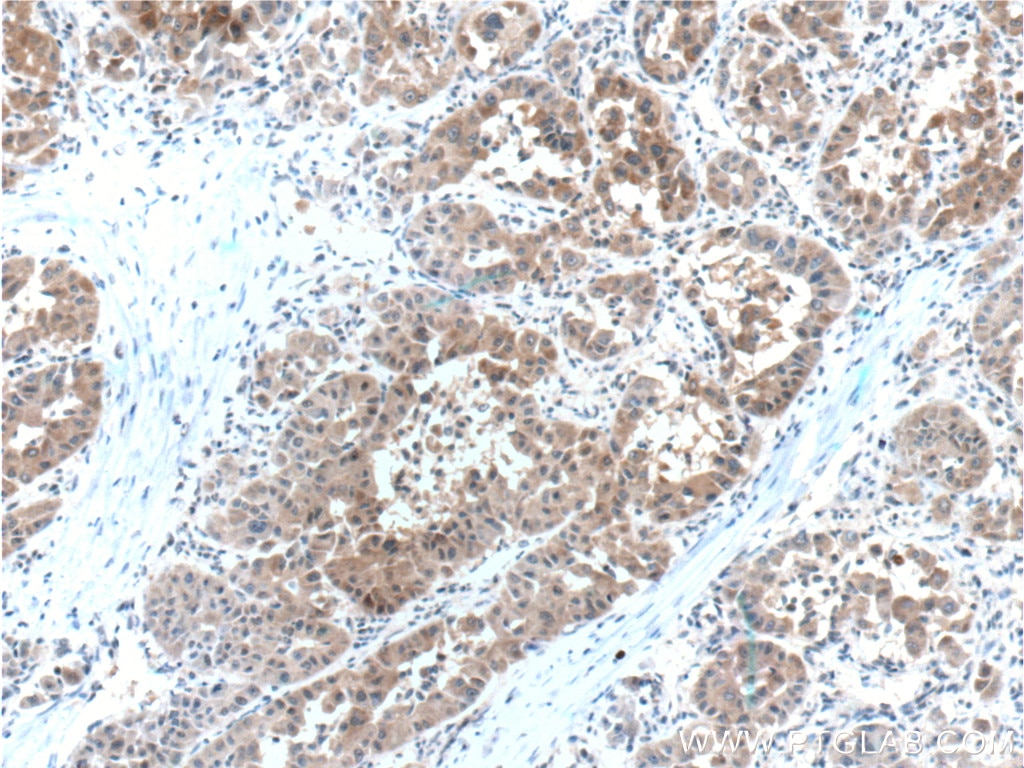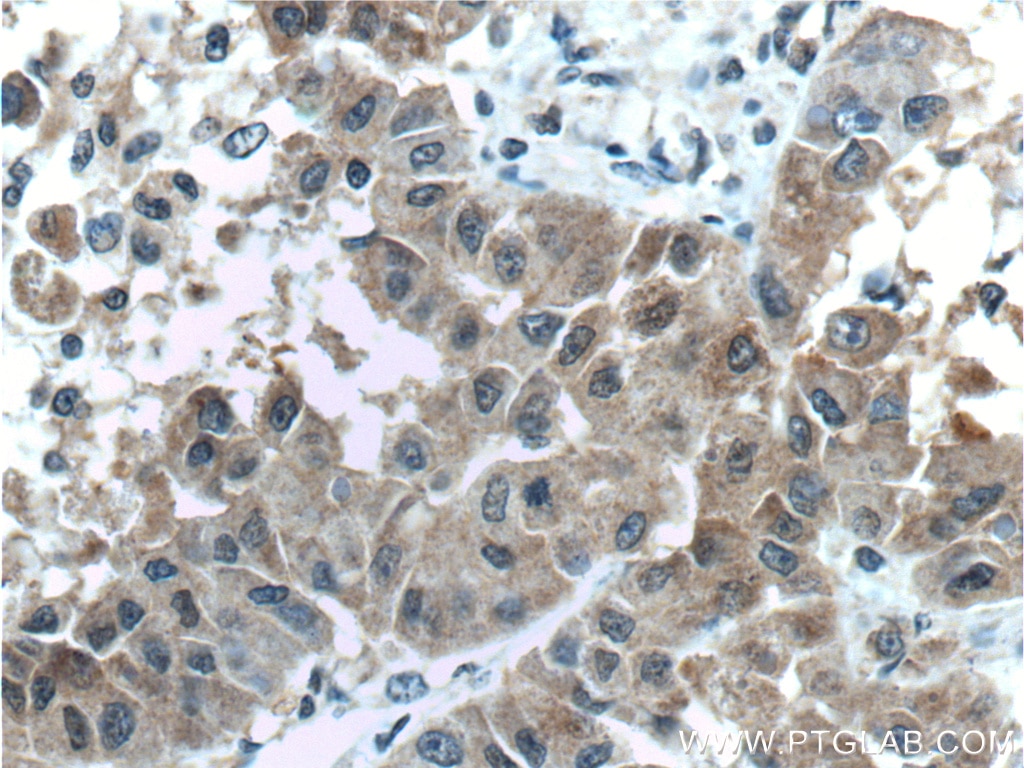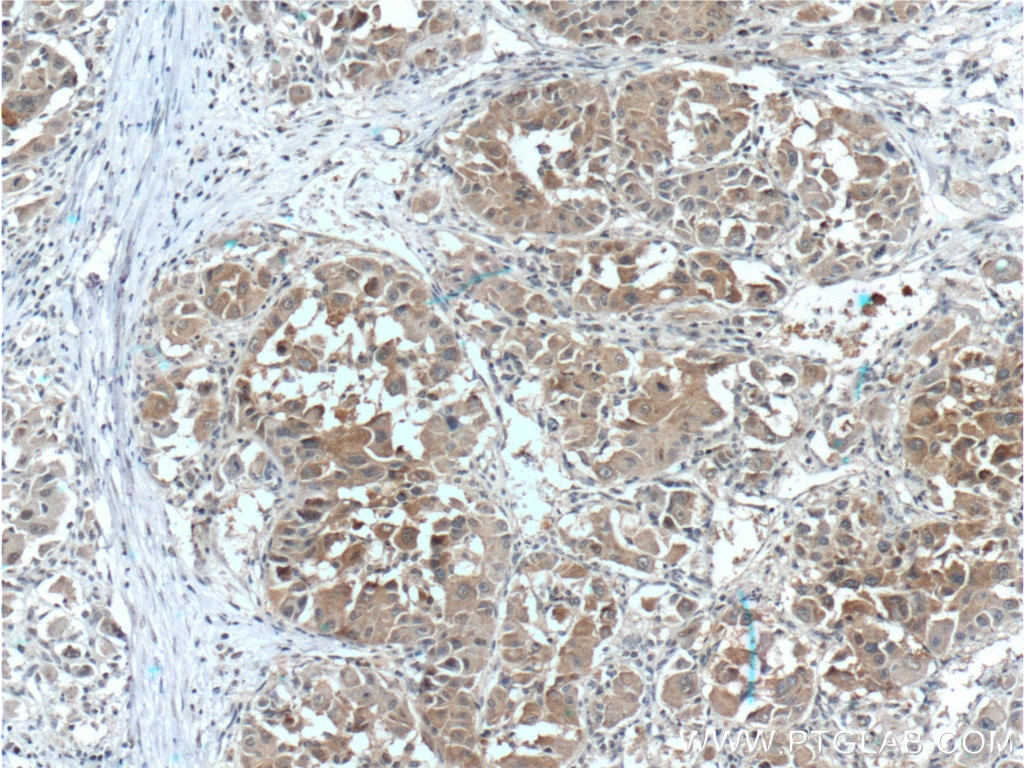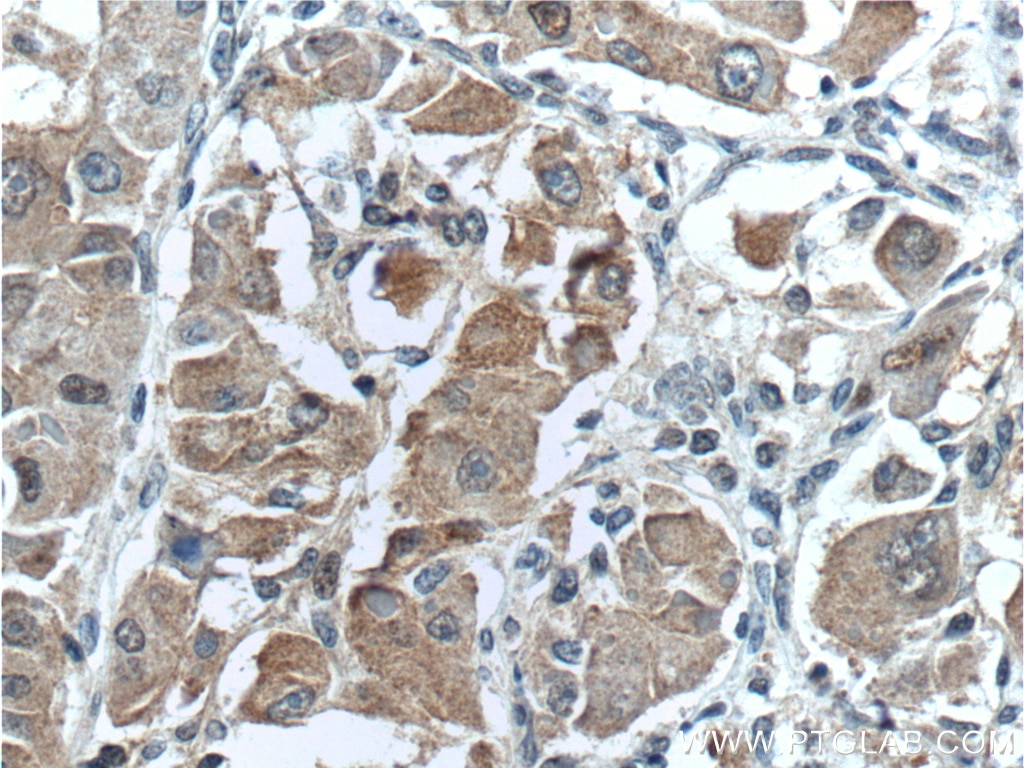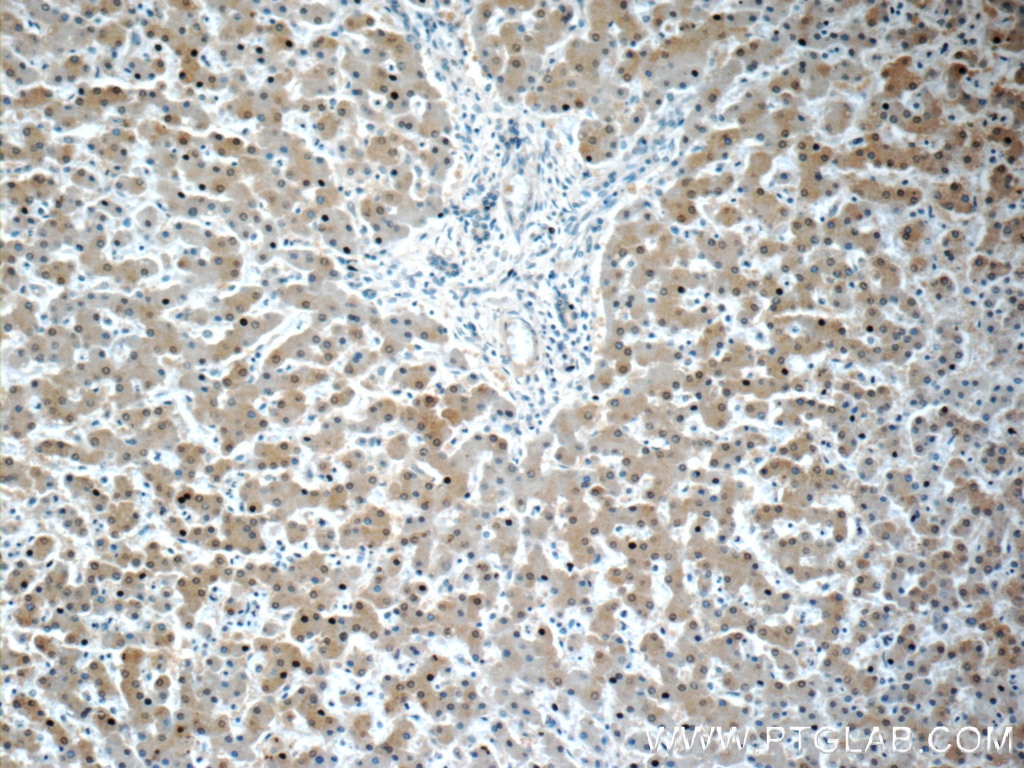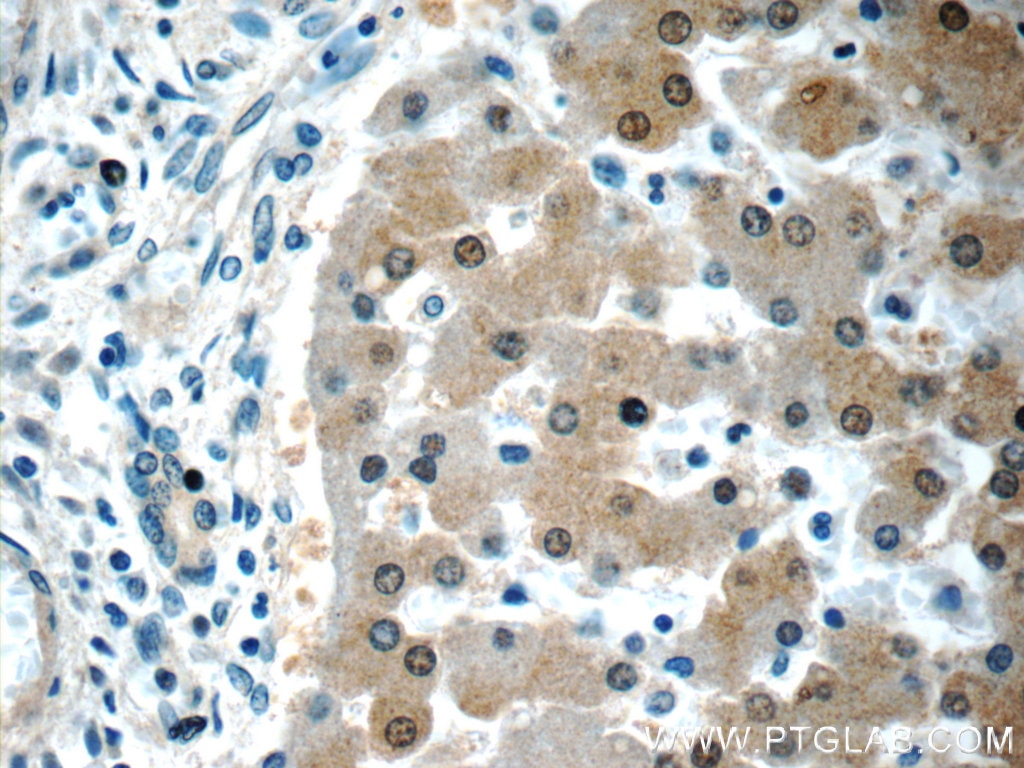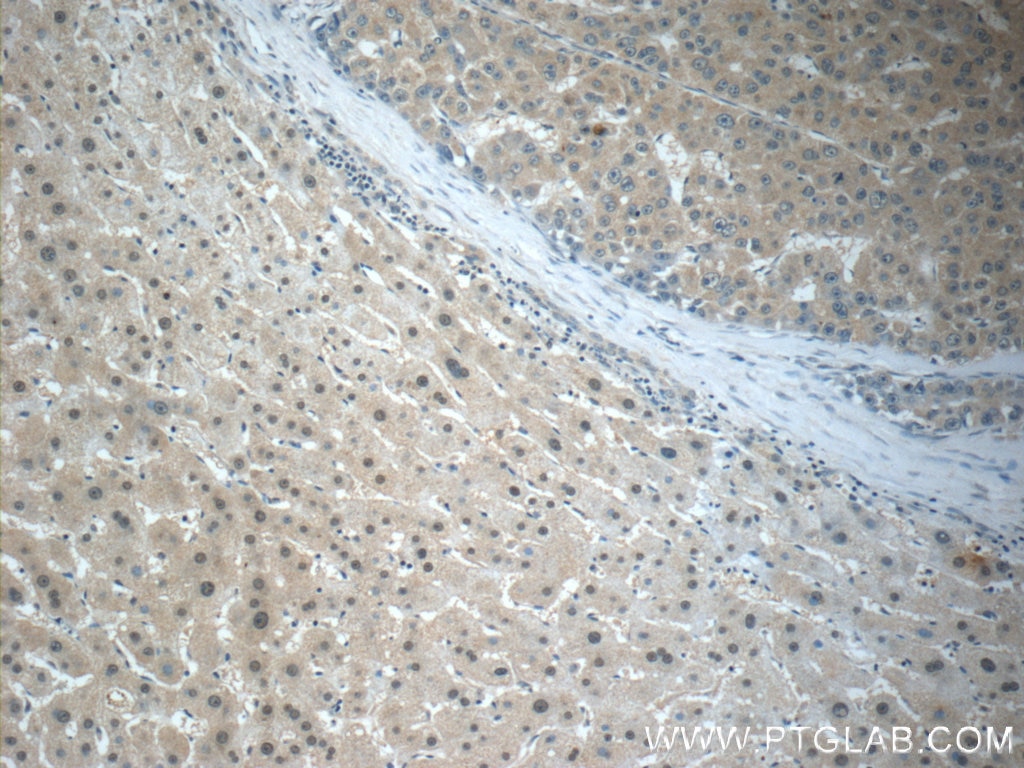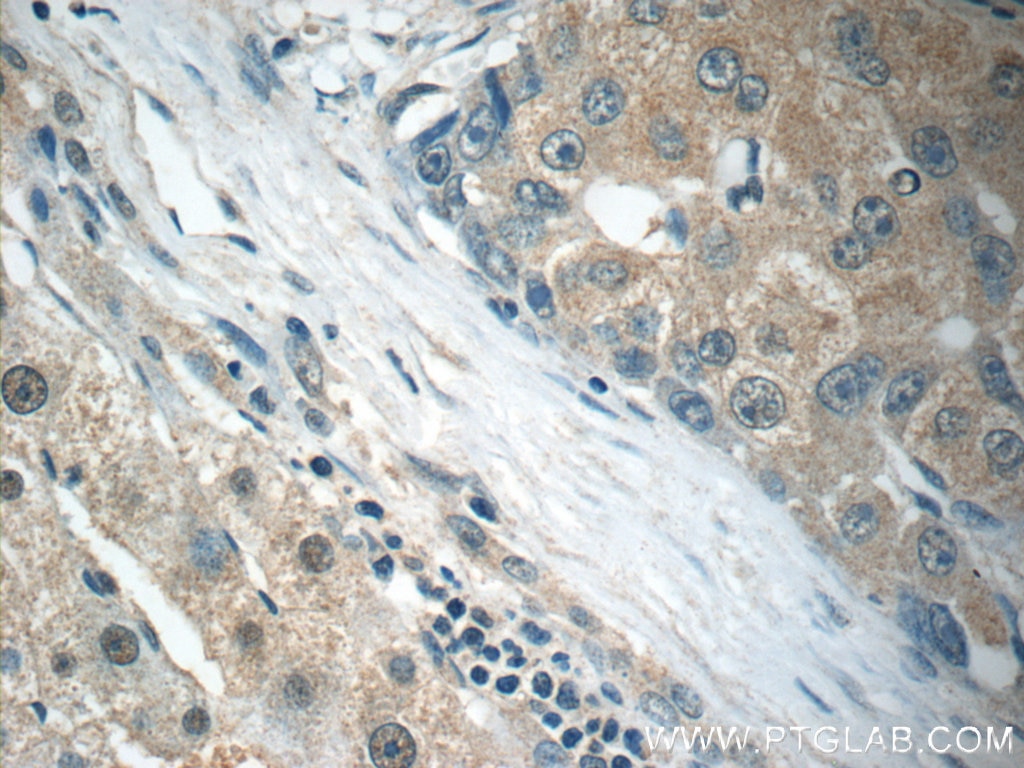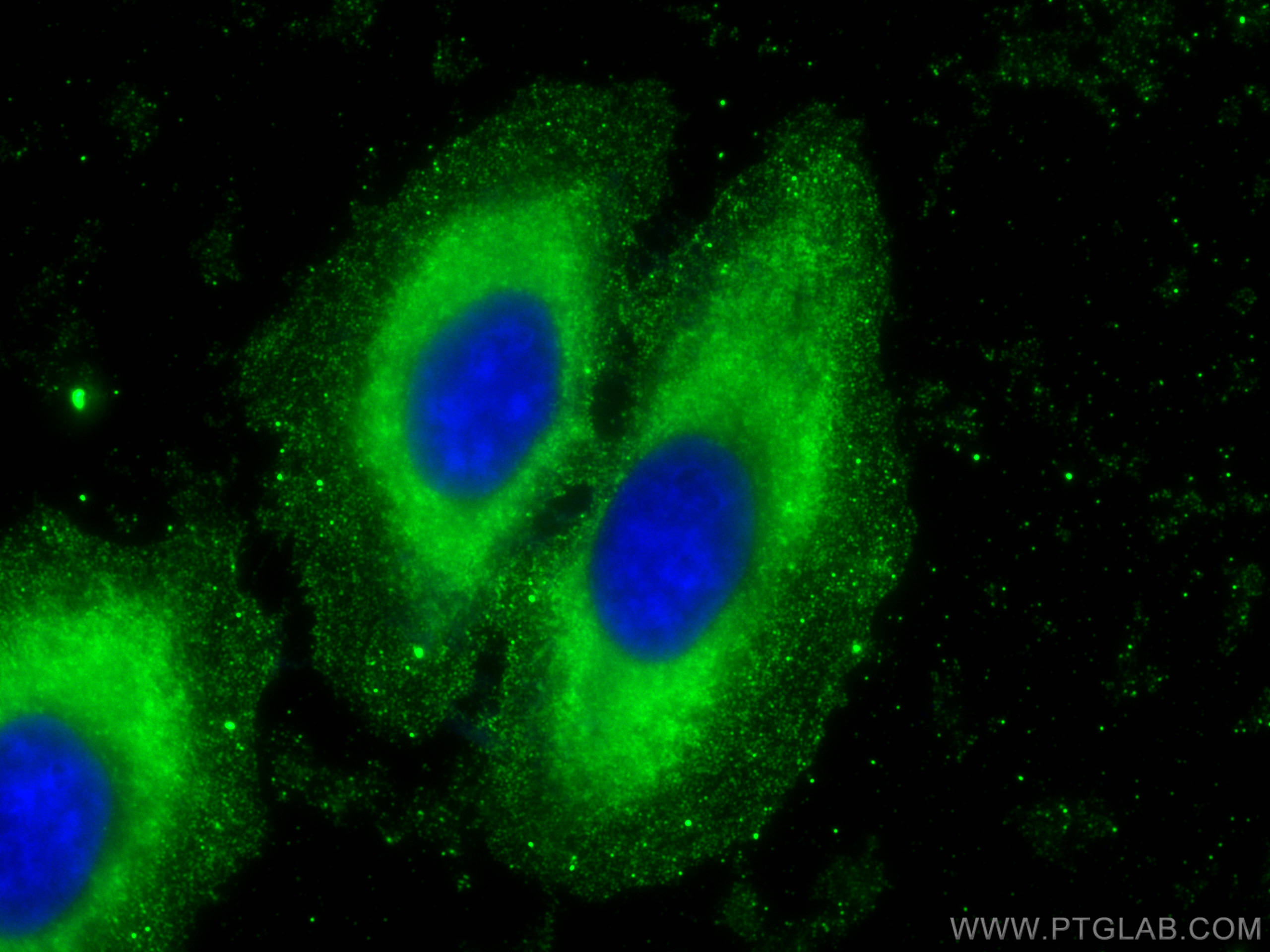- Phare
- Validé par KD/KO
Anticorps Monoclonal anti-Arginase-1
Arginase-1 Monoclonal Antibody for IF, IHC, IP, WB, ELISA
Hôte / Isotype
Mouse / IgG1
Réactivité testée
Humain, porc, rat, souris
Applications
WB, IP, IHC, IF, ELISA
Conjugaison
Non conjugué
CloneNo.
5D6D12
N° de cat : 66129-1-Ig
Synonymes
Galerie de données de validation
Applications testées
| Résultats positifs en WB | tissu hépatique de rat, cellules RAW 264.7, tissu hépatique de porc, tissu hépatique de souris |
| Résultats positifs en IP | tissu hépatique de rat, |
| Résultats positifs en IHC | tissu de cancer du foie humain, tissu hépatique humain il est suggéré de démasquer l'antigène avec un tampon de TE buffer pH 9.0; (*) À défaut, 'le démasquage de l'antigène peut être 'effectué avec un tampon citrate pH 6,0. |
| Résultats positifs en IF | cellules HepG2, |
Dilution recommandée
| Application | Dilution |
|---|---|
| Western Blot (WB) | WB : 1:1000-1:10000 |
| Immunoprécipitation (IP) | IP : 0.5-4.0 ug for 1.0-3.0 mg of total protein lysate |
| Immunohistochimie (IHC) | IHC : 1:200-1:1000 |
| Immunofluorescence (IF) | IF : 1:400-1:1600 |
| It is recommended that this reagent should be titrated in each testing system to obtain optimal results. | |
| Sample-dependent, check data in validation data gallery | |
Applications publiées
| KD/KO | See 1 publications below |
| WB | See 44 publications below |
| IHC | See 4 publications below |
| IF | See 23 publications below |
Informations sur le produit
66129-1-Ig cible Arginase-1 dans les applications de WB, IP, IHC, IF, ELISA et montre une réactivité avec des échantillons Humain, porc, rat, souris
| Réactivité | Humain, porc, rat, souris |
| Réactivité citée | rat, Humain, souris |
| Hôte / Isotype | Mouse / IgG1 |
| Clonalité | Monoclonal |
| Type | Anticorps |
| Immunogène | Arginase-1 Protéine recombinante Ag8810 |
| Nom complet | arginase, liver |
| Masse moléculaire calculée | 236aa,25 kDa; 322aa,35 kDa |
| Poids moléculaire observé | 36 kDa |
| Numéro d’acquisition GenBank | BC005321 |
| Symbole du gène | ARG1 |
| Identification du gène (NCBI) | 383 |
| Conjugaison | Non conjugué |
| Forme | Liquide |
| Méthode de purification | Purification par protéine A |
| Tampon de stockage | PBS avec azoture de sodium à 0,02 % et glycérol à 50 % pH 7,3 |
| Conditions de stockage | Stocker à -20°C. Stable pendant un an après l'expédition. L'aliquotage n'est pas nécessaire pour le stockage à -20oC Les 20ul contiennent 0,1% de BSA. |
Informations générales
Arginase-1 (Liver arginase) belongs to the arginase family. ARG1 is a novel immunohistochemical marker of hepatocellular differentiation in fine needle aspiration cytology and a marker of hepatocytes and hepatocellular neoplasms. ARG1 is closely associated with alternative macrophage activation and ARG1 has been shown to protectmotor neurons from trophic factor deprivation and allow sensory neurons to overcome neurite outgrowth inhibition by myelin proteins (PMID: 20071539, PMID:12098359). It can exsit as a homotrimer and it has 3 isoforms produced by alternative splicing (PMID:16141327). Defects in ARG1 are the cause of argininemia (ARGIN). Deletion or TNF-mediated restriction of ARG1 unleashes the production of NO by NOS2, which is critical for pathogen control (PMID:27117406). Before stroke, ARG1 mainly expressed in neurons in a normal brain (PMID: 23311438). The expression of ARG1 increases in microglia/macrophages and astrocytes early after CNS injuries. ARG1 has been regarded as a marker for beneficial microglia/macrophages and possesses antiinflammatory and tissue repair properties under various pathological conditions (PMID: 26538310, PMID: 31619589).
Protocole
| Product Specific Protocols | |
|---|---|
| WB protocol for Arginase-1 antibody 66129-1-Ig | Download protocol |
| IHC protocol for Arginase-1 antibody 66129-1-Ig | Download protocol |
| IF protocol for Arginase-1 antibody 66129-1-Ig | Download protocol |
| IP protocol for Arginase-1 antibody 66129-1-Ig | Download protocol |
| Standard Protocols | |
|---|---|
| Click here to view our Standard Protocols |
Publications
| Species | Application | Title |
|---|---|---|
Immunity Excessive Polyamine Generation in Keratinocytes Promotes Self-RNA Sensing by Dendritic Cells in Psoriasis. | ||
J Neuroinflammation Succinate-induced macrophage polarization and RBP4 secretion promote vascular sprouting in ocular neovascularization | ||
Int J Biol Macromol A multifunctional polydopamine/genipin/alendronate nanoparticle licences fibrin hydrogels osteoinductive and immunomodulatory potencies for repairing bone defects | ||
Carbohydr Polym Aloe polymeric acemannan inhibits the cytokine storm in mouse pneumonia models by modulating macrophage metabolism | ||
Int J Nanomedicine Rosuvastatin Nanomicelles Target Neuroinflammation and Improve Neurological Deficit in a Mouse Model of Intracerebral Hemorrhage. | ||
NPJ Parkinsons Dis Melatonin ameliorates Parkinson's disease via regulating microglia polarization in a RORα-dependent pathway. |
